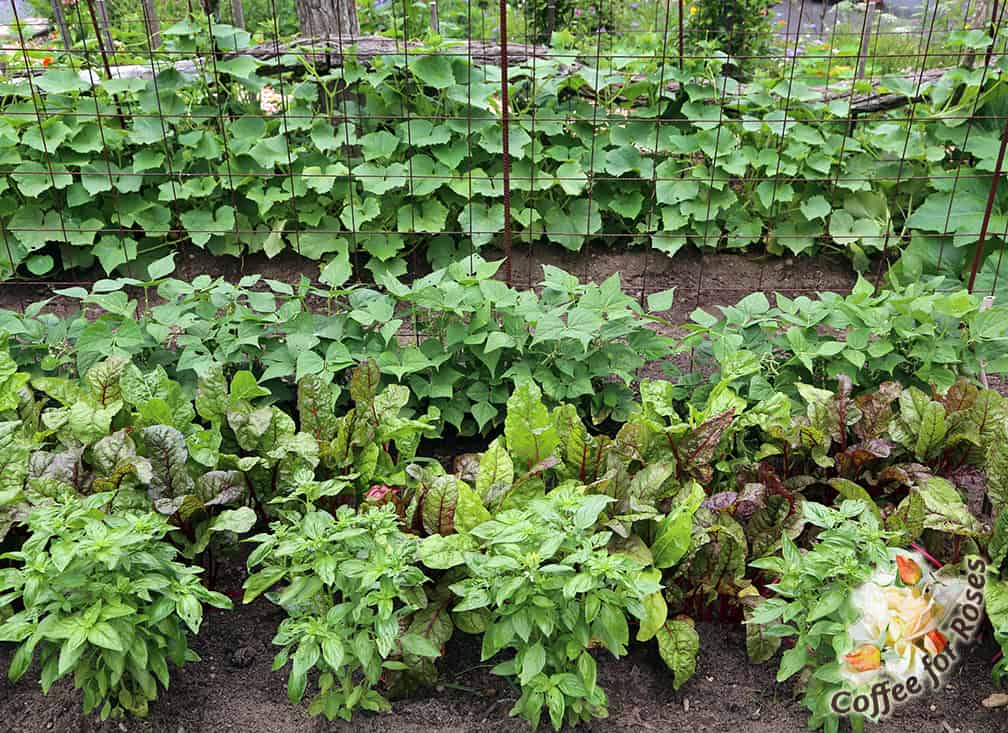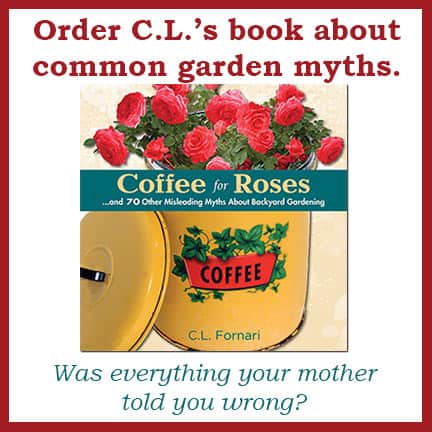I’ve heard from several people that they visit Coffee for Roses only on Wednesdays, when there’s a recipe or other foodie post here. Since one of my mottos is “Cook Every Day” I’m only too happy to shoot photos of what’s going on in my kitchen, and share that with you. I’ve been traveling for the past week, however, so have been (tragic!) unable to be cooking. So I’ve decided to use today’s foodie post to encourage all you veggie lovers to plan on putting several crops into your pots and vegetable gardens this year. Don’t stop at one planting in the spring because you can get so much more produce out of a garden if you plant heavily and often. Here are some tips in this direction:
1. Buy extra seed for things that can get replanted through the summer. Salad greens are the number one multi-crop edible, but second crops of kale, green beans, carrots, pak choi, and chard are also possible in most areas. Not all garden centers carry such seeds through the summer, however, so if you buy some extra early in the season, and put it in a jar or carton in a fairly cool location (not in the garden shed that heats up in the summer) you’ll have them later in the season.
2. If you plant peas on upright supports, plan on planting cucumbers, small winter squash, or pole beans on these same supports when the peas are finished. You can start these second crops in pots about three weeks before the time when the peas stop producing, and then plant the young plants on the trellises when the peas are done bearing. In my area the peas finish at the end of June but in warmer climates it’s much earlier.
3. Use the space between larger, taller growing plants to sow smaller crops. Planting salad greens around the base of broccoli or Tuscan kale, for example, is a good use of the space. If the lettuce and other greens is seeded fairly thickly it will help choke out weeds.
4. Garlic gets harvested in mid-season in most areas, leaving space to grow second plantings. If you live in an area where it’s likely to frost plant these spaces with a second sowing of cold-tolerant veggies such as kale, pak choi or carrots. Look for short-season leek seeds as well.

Here is how our garden looked one year when there were pole beans planted in late-June on one section of fence supports and cucumbers planted on the other section. Both had been used for sugar snap peas earlier in the season. In front of those are chard and basil. If you don’t have room to rotate your crops, don’t worry about this. Crop rotation is smart for farmers but not something most home gardeners have the space to do.
A recipe next week, I promise!



